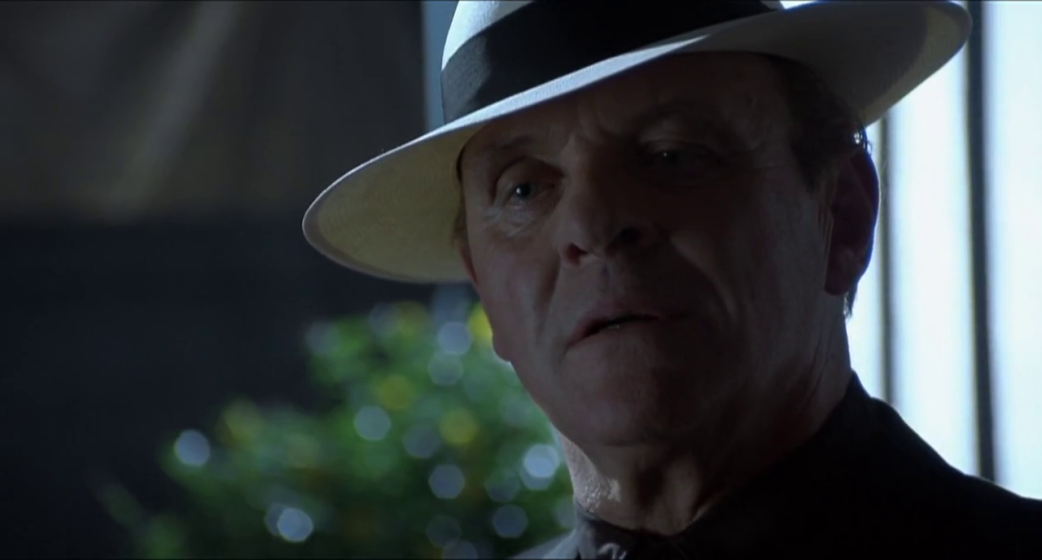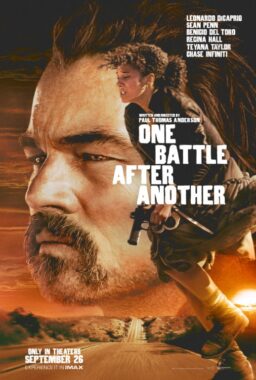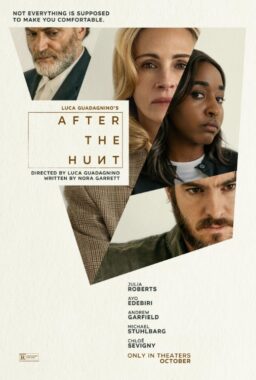When “Hannibal” was released in 2001, the question that seemed to hang around its neck was whether or not it lived up to the Best Picture-winning “The Silence of the Lambs.” There was no way for it to do so. In fact, it feels like author Thomas Harris knew that he couldn’t replicate “Lambs,” and so when he wrote Hannibal, knowing full well it was going to be a film, he very purposefully chose to tell a different story. Ridley Scott’s “Hannibal” takes some of the themes of “Lambs,” and its two world-famous characters, but uses them in service of a very different kind of movie. Whereas Demme made a character-driven thriller, Scott’s film is a blood-soaked opera, one that can now be reassessed with a gorgeously remastered 4K release by Kino Lorber.

From the very beginning, “Hannibal” is playing with its audience. Harris, writers Stephen Zaillian & David Mamet, and director Ridley Scott open with something of a nod to the fandom that surrounded “The Silence of the Lambs” after its release, when it became not just a hit movie but a pop culture phenomenon. In the prologue, Nurse Barney (Frankie Faison) is selling stolen property related to Hannibal Lecter to Gary Oldman’s deformed Mason Verger. The film doesn’t open with Hannibal or Clarice, it opens with a character from “Silence” who fans likely doubted they would ever see again. And what is he doing? He’s selling Hannibal Lecter’s iconic mask, one that became such a part of pop culture that Billy Crystal wore it at the Oscars. It’s almost as if “Silence” exists in this movie’s universe, as if he’s selling a part of film history, and it’s an acknowledgement of the footsteps it’s about to walk in. Or trample, depending on your perspective.
And yet the next scene takes “Hannibal” even further afield of Demme or Mann’s “Manhunter” than fans could have expected. Clarice Starling may have been the smartest person in any room in “Silence,” but “Hannibal” opens with a scene that repurposes her as an action star. The divided response to “Hannibal” likely starts right there in the fish market scene, one that turns Clarice Starling, now played by Julianne Moore, into an action heroine, complete with slow-motion shooting and spurts of blood. Who is this? She doesn’t look like Clarice, and she doesn’t act like Clarice, and people always respond defensively when a character doesn’t live up to their preconception of him or her. Watching it outside of the shadow of Jodie Foster, it’s a remarkably well-directed sequence that fits perfectly in Ridley Scott’s visual sensibility. It’s almost him saying this is not Jonathan’s movie, it’s mine. Now strap in.

Which makes it even more interesting how much “Hannibal” then turns down the heat to a low simmer. Clarice and Hannibal are apart for most of the film, the former getting closer to finding one of the FBI’s Most Wanted, while Lecter himself tries to avoid capture in Florence (plot correlations to the real “Monster of Florence” even more deliberate in the book) in between attending high art performances. “Hannibal” is about how much everyone wants a piece of Lecter—Starling and Agent Paul Krendler (Ray Liotta), Chief Inspector Rinaldo Pazzi (Giancarlo Giannini), and Mason Verger and his lackey. And it’s about how Lecter himself slides around all of them, killing every man who has attempted to track him in ways that are more inspired by giallo cinema than the American thriller that defined the last two films. Europe is not just a setting for Scott and “Hannibal,” it is the foundation of the tone of the film, one clearly influenced by the works of people like Dario Argento and Mario Bava. The shot of Pazzi hanging with his bowels on the stones below is straight out of giallo, and the intensity of the final sequences, especially the infamous one in which Krendler literally eats his own brain moves the film from thriller to horror.
If there’s one thing that the lackluster response to “Hannibal” seems to have missed most of all, it’s the disregard for Scott’s craftsmanship and the aesthetic of the film (which is easier to appreciate with a stunning 4K transfer). There’s a flow to the storytelling here, as there is in a lot of Scott’s work, that keeps the film moving across multiple locations and with different characters. It was daring to keep Lecter and Starling apart for as long as “Hannibal” chooses to do so, but it’s Scott and editor Pietro Scalia’s skill that almost make them feel like they’re not on other sides of the planet. The film smoothly segues from Lecter to Starling, until it reaches its crescendo. The editing by the masterful Scalia (“JFK,” “Gladiator”) is among the best work of his career in the way it keeps the film right on the edge of insanity in its very structure. The film seems to always be teetering on the edge of exploding into a bloodbath, and that’s not just in the storytelling but the way it’s constructed, almost like an opera. In terms of flow, combined with the more extreme aspects of the horror, I’ve always thought this was the film Hannibal Lecter himself would have liked the most of the five made about him, for whatever that’s worth. (Although he would have loved the masterful NBC series above all five.)

If there’s one major theme that carries over from “Silence” to “Hannibal,” it’s the subtle way in which female empowerment is woven into both stories. The director of “Alien” and “Thelma & Louise” knows a thing or two about powerful women, and the way he and his writers play with the theme of sexism was underrated in 2001. It’s not just the way Krendler makes sure to ogle Starling’s legs but the fact that the men are defined by selfishness and greed more than anything else (and how it leads all of them to grisly fates). Whether it’s seeking a reward or striving for vengeance, none of these men are smart enough to take Hannibal Lecter as seriously as Clarice Starling, which is why Hannibal saves her in the final scenes. She doesn’t beg or bribe him to do so. She would never sell his mask to the highest bidder.
About that ending, it’s a mark on an otherwise excellent film. The story goes that Scott himself didn’t like the closing scenes of the book, which saw Clarice and Hannibal running off together, and it’s true that ending the film “Hannibal” like that probably would have had viewers throwing empty popcorn containers at the screen. It’s the kind of thing that can be foreshadowed over hundreds of pages but would feel abrupt and unearned in a film. However, Scott, Zaillian, and Mamet never really solved how to replace it. The gotcha reveal of the fact that Hannibal amputated his own arm instead of Clarice’s, followed by Hannibal’s scene on the plane, feels more like a set-up to a direct sequel than a conclusion. Although, once again, there’s Hannibal making a new fan.












